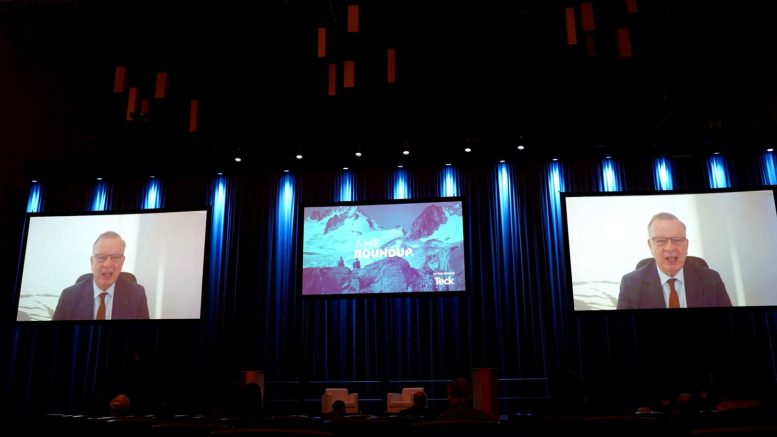The Association of Mineral Exploration’s annual Roundup event kicked off this week, providing the first opportunity for industry delegates to mingle in person at an industry event following the start of the Covid pandemic about two years ago.
Among the first day’s highlights were an address by British Columbia’s Minister of Energy, Mines, and Low Carbon Innovation, Bruce Ralston, and the release of the AME’s ‘Explore our Economy’ (EOE) report, which examined the real impact the mineral exploration industry had in 2020 on the local economies of the province.
Minister Ralston declared that despite the challenges the industry dealt with in 2021, the forecast value for total provincial mining production in the province reached an all-time high of $12.6 billion. He added that total exploration expenditures of $659.8 million were near record-setting.
AME president and CEO Kendra Johnston officially launched the report on January 31, quantifying trends and figures gleaned from a survey conducted by iTOTEM.
Johnston said the report highlighted the economic and social impact of the mineral exploration and development supply chain in B.C. in 2020.
“The report set out to capture the economic impact of our industry, the reach and diversity of the vendors not only the types of vendors but the geographic diversity of them as well, the economic relationship between indigenous members of our community and the business community, and then how our industry really does contribute to the local economies in which we live work and play,” she said.
According to the report, which used a survey of vendors and data from Natural Resources Canada, in 2020, mineral exploration companies spent $513.5 million in the province.
The EOE received and analyzed detailed spending data for $148 million of the total spending in the province, accounting for about 29% of the entire B.C. exploration expenditure in 2020.
The report examined expenditures on goods, materials and services from more than 445 vendors located in 110 municipalities and Indigenous nations across the province.
The EOE report found that mineral exploration projects spent between $61,000 and $66 million annually and contributed $35.9 million in provincial sales tax.
The average expenditure reported by a single mineral exploration project is $1.2 million, with the average annual spend on drilling per project being $2.9 million.
The potential economic impact of a five-year permit is $11 million.
Additionally, the report found that every exploration company working in B.C. contracted at least 10 vendors per project.
Meanwhile, these economic benefits circle out to the surrounding host communities. The report underscored the fact that Indigenous participation was central o successful mineral exploration in the province.
“Exploration projects bring value to Indigenous communities through employment, direct investments, building capacity, and supporting Indigenous-affiliated businesses and local initiatives. Indigenous affiliated businesses are essential partners and vendors in the mineral exploration supply chain,” said Johnston.
The EOE report found more than 30 investments were directed to Indigenous communities or affiliated organizations, totalling about $200,000 in 2020.
Indigenous-affiliated vendors offered goods, materials or services in eight of the 12 categories reported in EOE.
In B.C., 21% of mineral exploration spending went to Indigenous-affiliated vendors. In comparison, federal agencies strive for Indigenous vendors to hold 5% of public contracts by 2024.
Of these, 17% of drilling companies were Indigenous-affiliated. These companies represented about 40% of the total drilling expenditure.
Of the 445 vendors reported in EOE, more than 35 Indigenous-affiliated businesses were associated with 19 Nations. “These are essential partners and vendors in the mineral exploration supply chain,” said Johnston.
The EOE report also looked at how EOE respondents took climate action by using alternative transportation and fuel-efficient vehicles, improving electricity and processing options, and tracking and reporting greenhouse gas emissions.
According to Johnston, B.C. is a “centre of excellence” for mineral exploration. “Mineral explorers are the research and development arm of the global mining industry. Major producers invest in our mineral exploration projects and companies to access the reserves and resources to feed the global supply chain and unlock the potential lying in the ground,” said Johnston.
“It starts with us, the mineral explorers, and our time is now as responsible explorers. We are the first step in the global supply chain and finding the critical minerals needed for our low carbon future,” said Johnston.
“Every employee, every business, every owner, every indigenous partner in mineral exploration is part of our path to reaching our full potential, and we’re not there yet. We have a way to go.”


Be the first to comment on "AME Roundup: B.C. mining production achieves record in 2021"